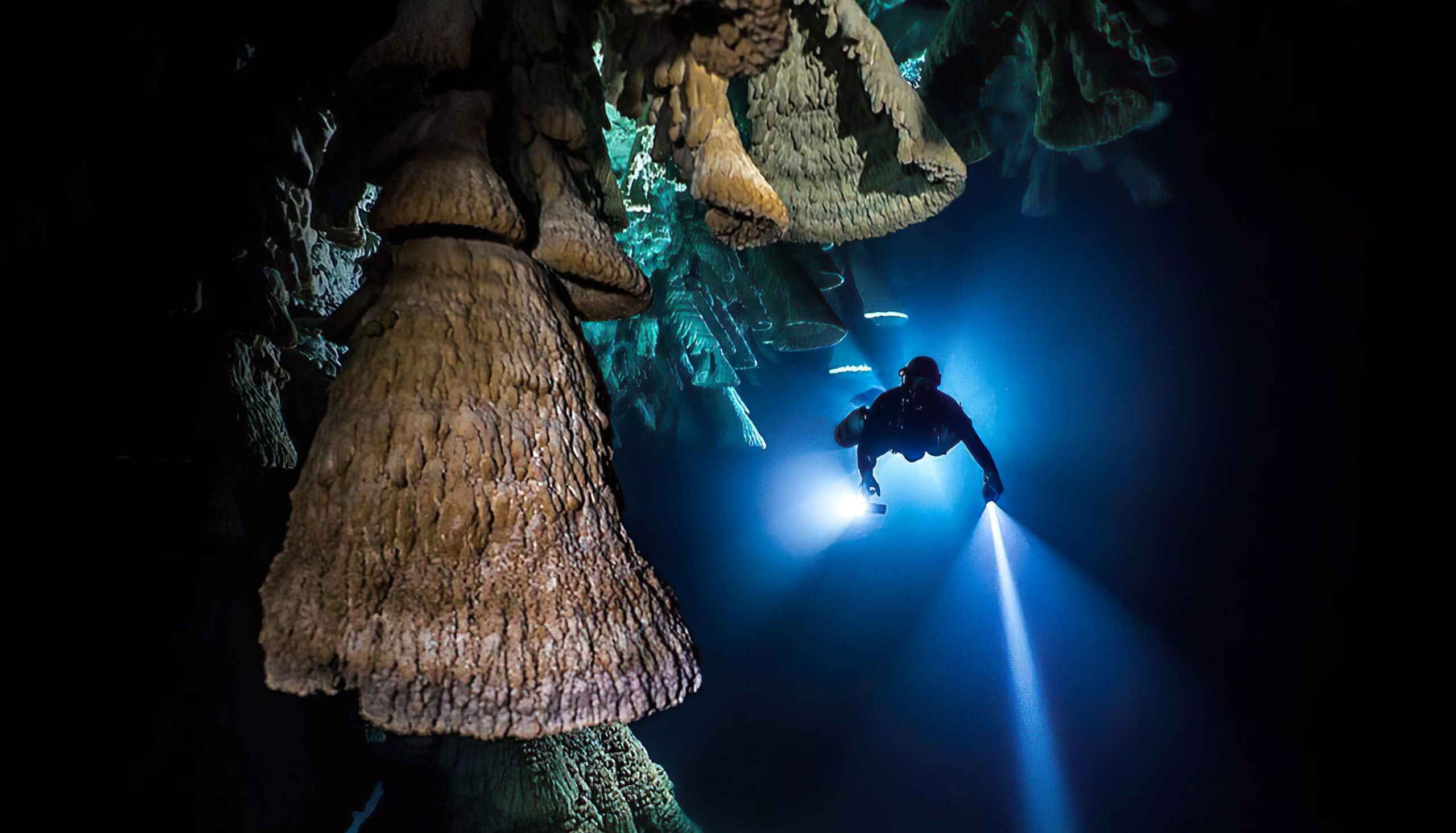
Hell’s Bells—What Are These Mysterious Formations Under Cenote Pools?
Discover these bizarre formations and many other attractions featured in this nature park.
Cenotes Zapote Ecopark is a nature park located 18.6 miles from Puerto Morelos in Quintana Roo. It is one of the area’s best spots for spending the day enjoying the cenote pools, being out in nature, and just having fun.

But there is something else under the cenote’s water that attracts scuba divers from around the world. A mysterious landscape that wows anyone who dares to dive into the deep. They are the famous hell’s bells, mineral formations with a very unusual shape.
What are they exactly and why are they formed? We will tell you more about this mystery and everything you can do when visiting Cenotes Zapote Ecopark.
What are Hell’s Bells?
About halfway between the surface and the bottom of Zapote cenote (one of four in the park) hang strange stalactites that, instead of being long and pointed, are conical and hollow inside.
These formations are called Hell’s Bells, a reference to the song of the same name by the rock band AC/DC.

Although we still don’t completely understand the way they formed, we do know a few things. The bells are made of carbonates and hang in the halocline part of the pool. This is where the salt water that seeps in from the ocean meets the fresh water on the surface. Everything seems to indicate that the unique conditions in this area, where both kinds of water partially mix and there is almost no oxygen, are what has caused the biological, physical, and chemical processes leading to the formation of Hell’s Bells. Even the microorganisms that inhabit the cenote play a part.
These unique speleothems can balloon in size, some even measuring 6.6 feet long and 3.3 feet wide!
These formations are usually found about 95 to 115 feet down. Although they have been spotted in other caves in other parts of the world, the formations in Zapote cenote are the only ones that have been explored on the Yucatan Peninsula.
What to Do in Cenotes Zapote Ecopark?
If you are certified, you can scuba dive in the main cenote pool and see the mind-blowing Hell’s Bells with your own eyes. However, if you can’t or don’t want to dive, there are many other things to do.
In addition to the Zapote cenote, there are three other cenote pools where you can swim and enjoy the cool water. Two of them are open air and the third one is in a cave. The underground cenote is called Abuelo Che Che and is known for its spectacular underground scenery. The park has snorkel equipment if you would like to use it to explore the pools.

If you have ever wondered what it would be like to fly over the rainforest like an exotic bird, you can get a taste by launching yourself down a zip line that runs for 547 yards. There is also an aquatic zip line soaring over a cenote.
Do you like biking? The park has a trail that runs through the magnificent jungle and around the cenotes. You’ve got to see the views!
Cenotes Zapote Ecopark has full amenities, such as a restaurant, lockers, bathrooms, showers, parking, free Wi-Fi, and an area with hammocks for chilling out.
Hours and Prices
Cenotes Zapote Ecopark is open every day from 9:00 AM to 8:00 PM.
There are a range of packages to choose from, including several attractions. They all include the buffet. The basic package costs $50 USD for adults and $40 USD for kids, while the most complete package runs $125 USD for adults and $100 USD for children.
How to Get to Cenotes Zapote?
To reach the park by car from Playa del Carmen, take the road to Cancún until Puerto Morelos. Once there, turn left towards the Ruta de los Cenotes (Cenote Route) and head west for about 12.4 miles. You will see signs for Cenotes Zapote and the Kin Ha nature park. The gravel road runs for 3.7 miles and the turnoff to the cenote pool is clearly marked.
